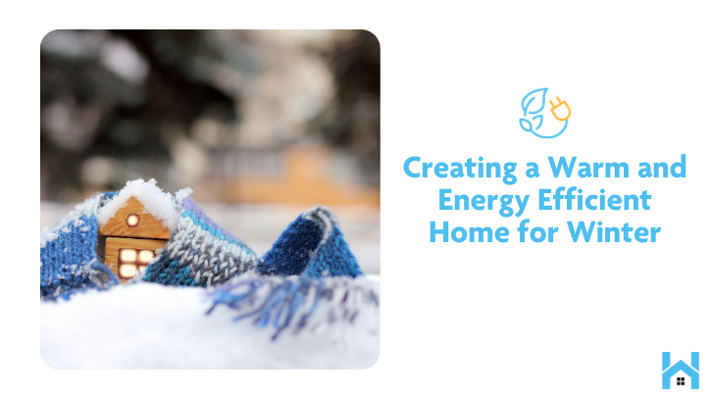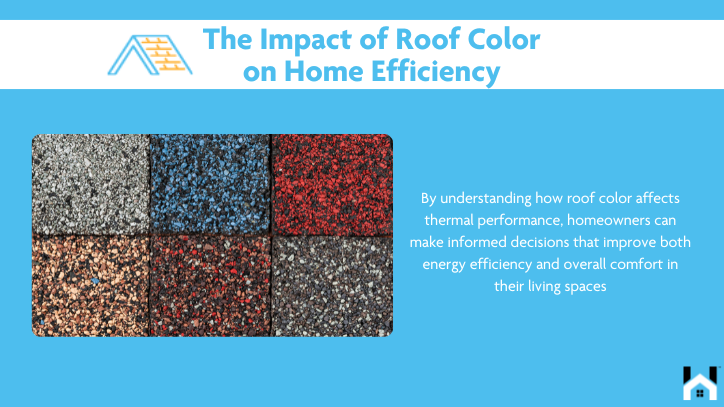
In today's world, where energy efficiency is more important than ever, homeowners are continually looking for ways to minimize their environmental footprint and reduce utility costs.
One unexpected factor that significantly impacts home efficiency is roof color. This article will delve into how various roof colors can affect your home's energy consumption, the scientific principles behind these effects, and the practical aspects of selecting the ideal hue.
Additionally, we will explore other elements such as insulation and ventilation that contribute to overall efficiency, along with helpful tips to enhance your home's performance.
We invite you to join us in uncovering future trends in home efficiency and discovering how a simple choice of color can lead to notable savings and improved sustainability.
The Importance of Home Efficiency
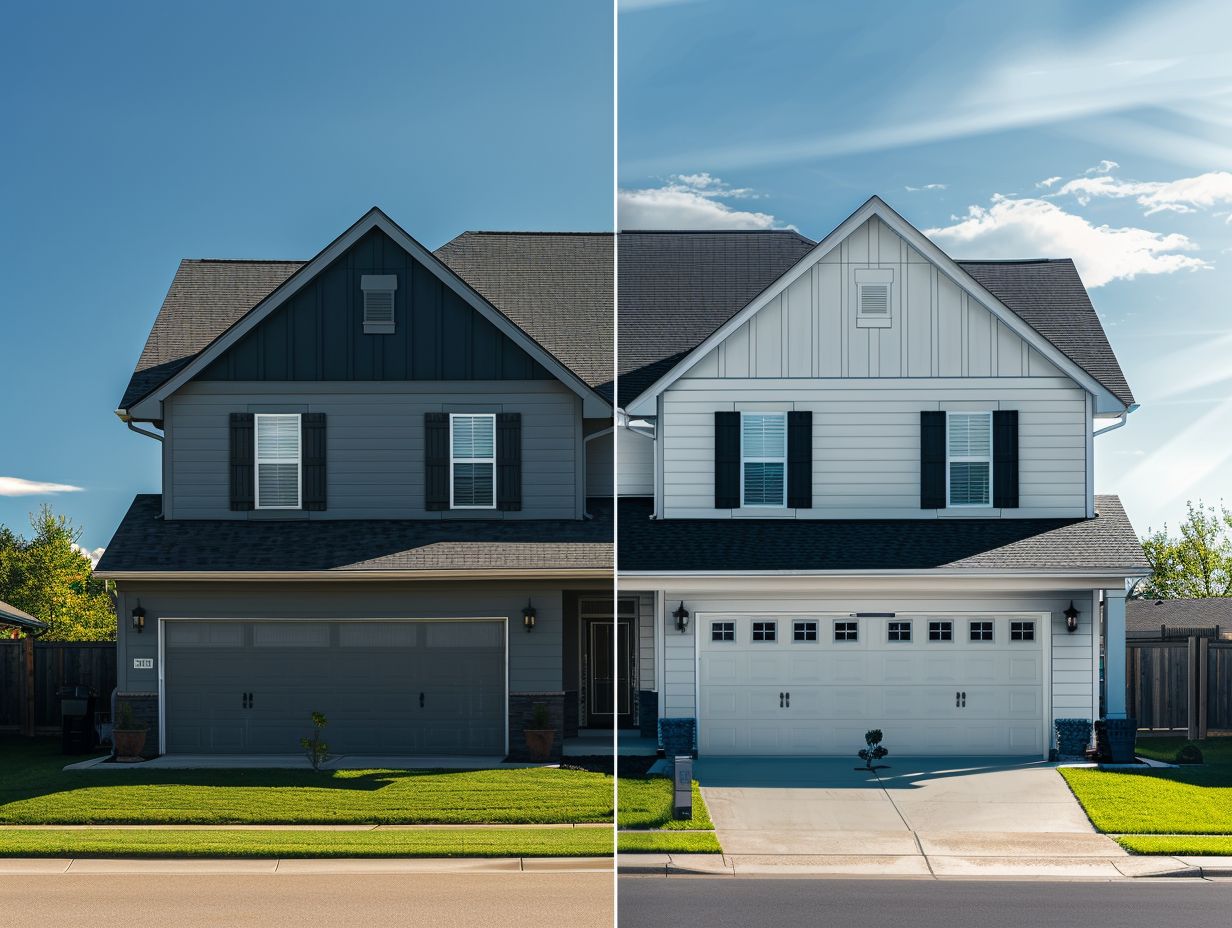
Home efficiency is essential for not only reducing energy consumption and lowering heating costs but also for enhancing comfort and sustainability. As homeowners place a greater emphasis on their ecological footprint, it becomes increasingly important to understand the various components that contribute to overall home efficiency.
This includes considering energy-efficient design, insulation materials, and the environmental impact of construction materials. By implementing smart strategies to improve home efficiency, homeowners can achieve long-term savings, enhance the value of their homes, and create a more comfortable living environment for their families.
Why Energy Efficiency Matters
Energy efficiency is important because it reduces energy consumption while also minimizing our environmental impact, ultimately contributing to a more sustainable future. By optimizing their energy use, homeowners can enjoy significant energy savings while enhancing their home's thermal performance and comfort. This not only leads to lower heating costs but also reduces their ecological footprint, aligning with energy policies designed to address climate change.
Embracing energy efficiency is a key strategy for effective energy management, helping to balance demand and supply while alleviating pressure on existing energy infrastructure. As individuals and communities adopt more energy-efficient practices and technologies, they play a significant role in lowering greenhouse gas emissions, which is essential in combating global warming.
The financial advantages are considerable; over time, investing in energy-efficient equipment and retrofits often results in substantial savings on utility bills. It becomes evident that prioritizing energy efficiency is not merely a personal gain but a collective responsibility that helps foster a healthier environment for future generations.
How Roof Color Affects Home Efficiency
The color of your roof significantly impacts your home's efficiency, particularly regarding energy costs and comfort. Generally, light-colored roofs tend to have higher solar reflectance, which helps keep homes cooler in warmer climates by reducing heat absorption. In contrast, dark-colored roofs may lead to increased heat gain.
By understanding how roof color affects thermal performance, homeowners can make informed decisions that improve both energy efficiency and overall comfort in their living spaces.
Understanding the Science Behind Roof Color
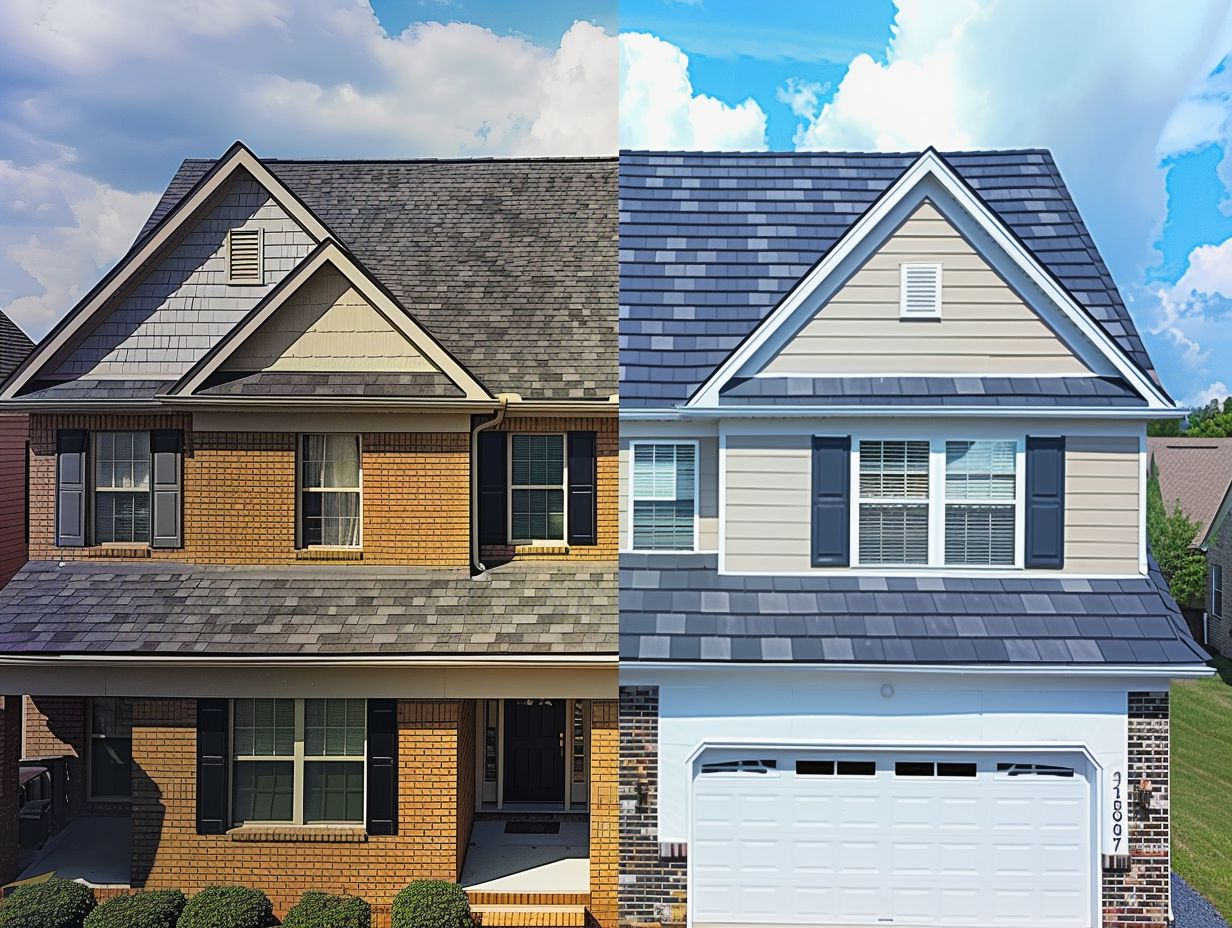
Understanding the science behind roof color involves exploring how various shades interact with sunlight and affect thermal performance. For example, light colors tend to reflect more sunlight, which assists in cooling homes and reducing air conditioning costs. On the other hand, darker colors absorb heat, potentially leading to increased energy consumption, particularly in warmer climates. This knowledge enables homeowners to make informed color choices that align with their energy-efficient design objectives while also considering aesthetic appeal and current roofing trends.
Color psychology is an important factor in the decision-making process, as different hues can evoke specific emotions and perceptions that influence the overall home design. With the growing emphasis on eco-friendly building practices, many homeowners are now leaning towards lighter roofing materials that not only improve energy efficiency but also contribute to a modern, minimalist aesthetic.
Current trends in roofing are increasingly favoring sustainable options, with features like cool roofs becoming popular due to their effectiveness in reducing the urban heat island effect. By selecting the appropriate color and material, homeowners can create a stylish yet energy-efficient living space that reflects their personal taste while also demonstrating a commitment to environmental considerations.
Choosing the Right Roof Color for Your Home
Selecting the appropriate roof color for one’s home requires a careful balance between aesthetic appeal and practical considerations, including climate zones and energy efficiency. Homeowners should evaluate their local climate; for instance, regions with higher temperatures may find that lighter colors, which reflect sunlight, are more advantageous, while cooler climates might benefit from darker roofs that help retain heat.
Furthermore, a thoughtful choice of color can enhance the overall aesthetics of the neighborhood and positively impact property resale value. Therefore, it is essential to take all these factors into account when making a decision.
Factors to Consider
When selecting a roof color, there are several factors to consider, including local climate, aesthetic preferences, and principles of energy efficiency. For instance, the climate in your area can greatly affect how well the color choice helps regulate indoor temperatures. Additionally, the roofing color should harmonize with the architectural style of the home. Understanding these elements is crucial for making a decision that effectively balances functionality and visual appeal.
The climate of a region is particularly important in determining whether lighter or darker shades will be more advantageous. In hotter areas, lighter colors are beneficial as they reflect sunlight, helping to keep homes cooler and reducing the need for air conditioning. On the other hand, in colder climates, darker roofs can absorb heat, enhancing energy efficiency during the winter months.
Aesthetic considerations also include trends within the neighborhood and personal style, both of which can influence property value and curb appeal. Moreover, choosing materials that complement the selected colors can improve longevity and durability, resulting in a roofing solution that meets both practical and design needs.
Other Factors That Impact Home Efficiency
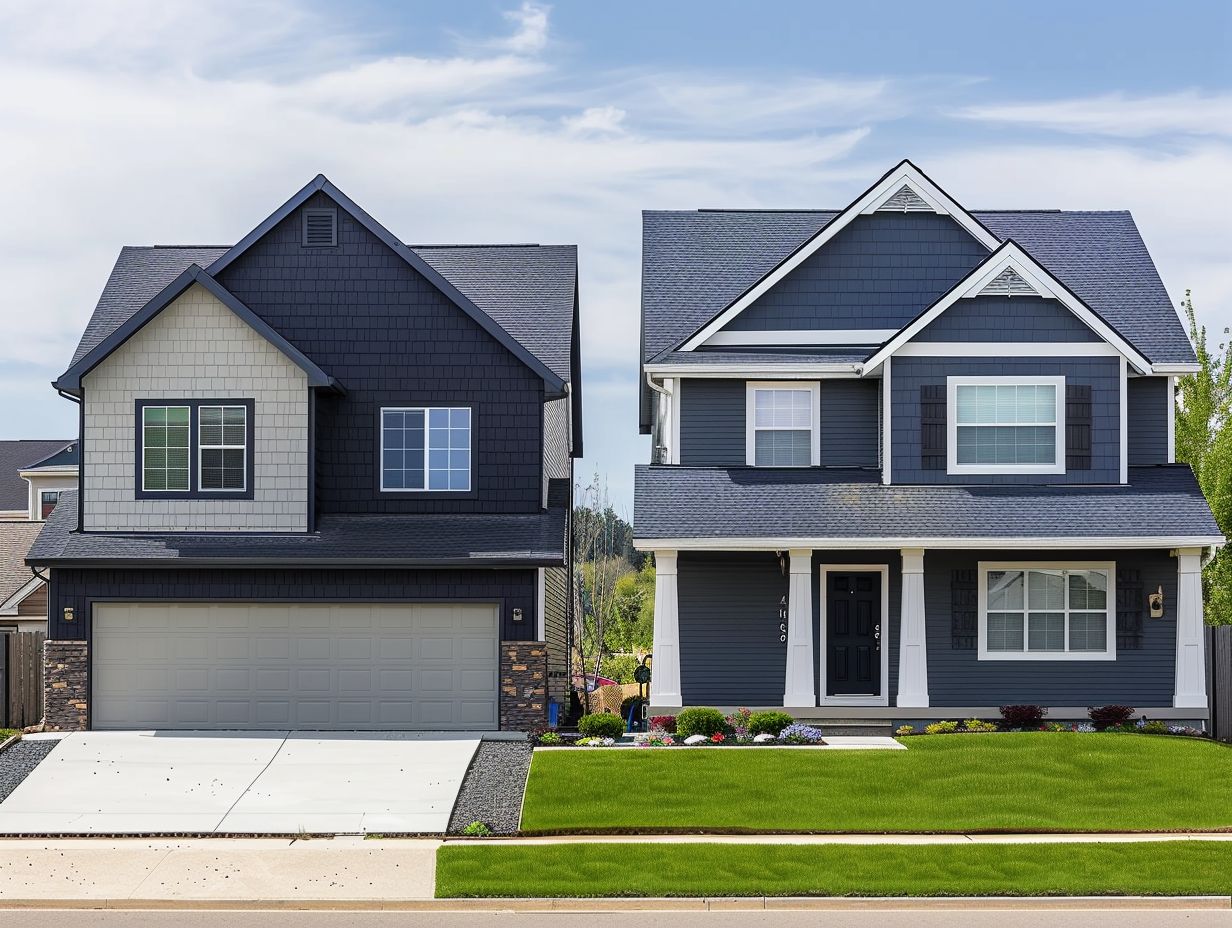
Home efficiency involves a range of factors beyond just the color of the roof. Key elements such as insulation, ventilation, and roof maintenance significantly contribute to optimizing energy performance.
Using appropriate insulation materials and ensuring effective attic ventilation can help reduce heat gain during the summer and heat loss in the winter, which in turn has a considerable effect on energy consumption.
Additionally, regular roof maintenance is essential for keeping roofing systems efficient and durable over time, thereby supporting a well-functioning building envelope.
Insulation, Ventilation, and Maintenance
Insulation, attic ventilation, and roof maintenance are critical elements that work together to enhance a home's thermal efficiency and contribute to energy savings. By using proper insulation materials, homeowners can effectively prevent heat loss during the colder months and mitigate heat absorption in warmer seasons. Additionally, adequate ventilation plays a vital role in regulating indoor temperatures and humidity levels. Regular roof maintenance is essential to ensure that these systems operate effectively and support long-term energy efficiency in the home.
Homeowners have a variety of insulation materials to choose from, including:
- Fiberglass
- Foam
- Cellulose
Each offering distinct advantages tailored to specific needs and budgets.
Regarding attic ventilation, ensuring that vents remain unobstructed and that exhaust fans are functioning properly can greatly improve airflow. This balance is crucial for moisture control, which helps prevent mold growth and contributes to a comfortable living environment.
Scheduling regular roofing inspections can help identify potential issues, such as leaks or damage, early on. This proactive approach allows for timely repairs, ultimately preserving the integrity of both the insulation and ventilation systems.
By implementing these practical measures, homeowners can not only enhance overall energy efficiency but also create a healthier and more sustainable living space.
Maximizing Home Efficiency with Roof Color
Maximizing home efficiency through roof color involves thoughtful consideration of energy-efficient design principles and the use of reflective roofing options. By choosing a roof color that enhances solar reflectance, homeowners can greatly reduce energy consumption and improve comfort levels within their homes.
This strategic decision not only leads to energy savings but also supports sustainability goals, reflecting a growing trend in the roofing industry.
Tips and Tricks for Optimal Efficiency
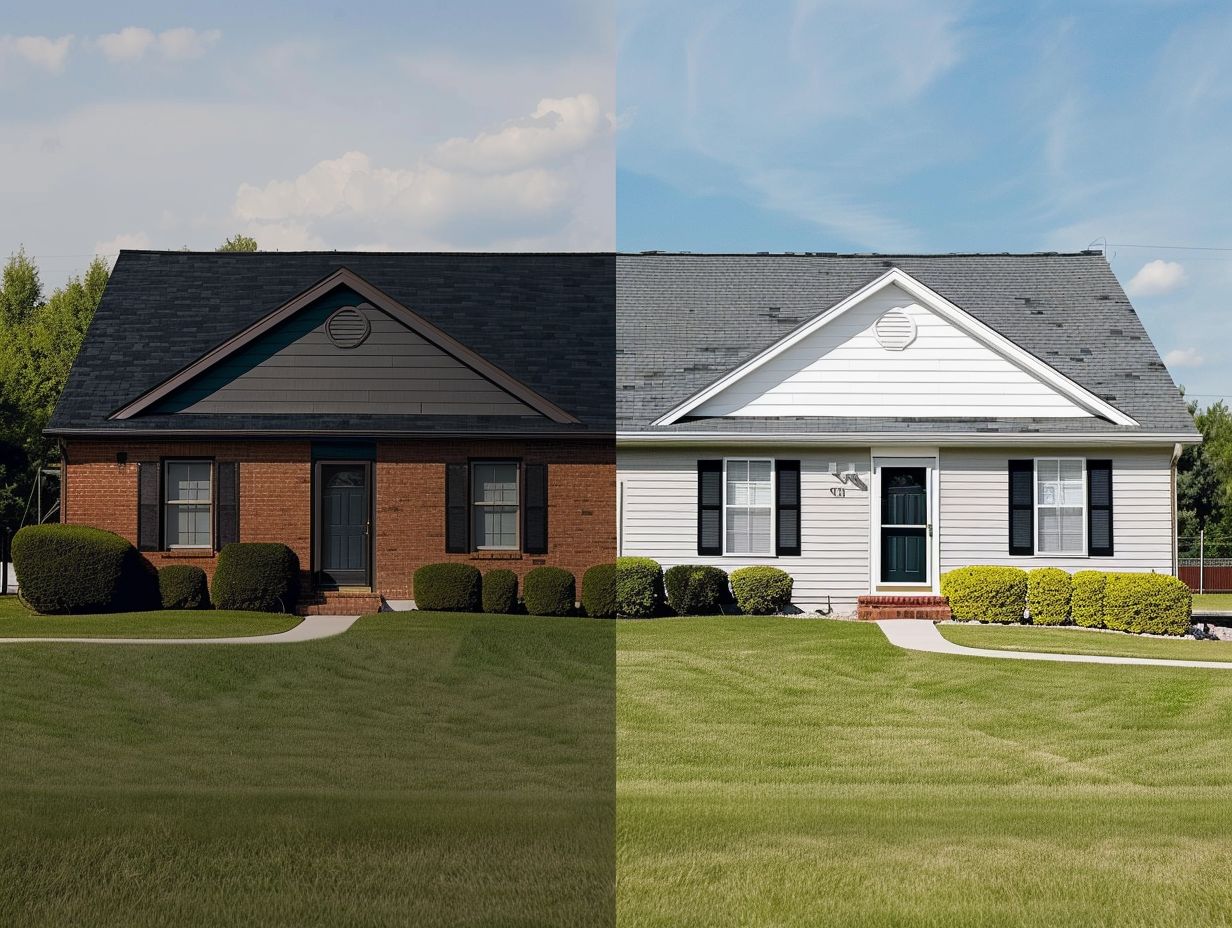
To achieve optimal efficiency, homeowners can implement various tips and strategies related to roof color and energy-efficient upgrades. Choosing lighter roof colors can help regulate indoor temperatures, while regular maintenance ensures that roofing systems remain in excellent condition, ultimately providing long-term cost-effectiveness. Embracing energy-efficient design principles can lead to significant energy savings and enhanced comfort within the home.
For example, selecting reflective roofing materials can greatly reduce heat absorption, keeping living spaces cooler during the summer months. Homeowners should also consider insulation upgrades, as these improvements work in harmony with roofing choices to minimize heating and cooling costs.
Additionally, conducting periodic inspections and cleaning can extend the lifespan of roofing systems and decrease the likelihood of unexpected repair expenses, making this a prudent financial decision.
By thoughtfully selecting roof color and implementing energy-efficient practices, individuals can foster a more sustainable living environment while enjoying optimal comfort throughout the year.
The Future of Home Efficiency and Roof Color
The future of home efficiency and roof color is undoubtedly promising, thanks to continuous advancements in roofing technologies and sustainable practices that are leading to more energy-efficient designs.
As energy policies adapt to tackle climate change, homeowners are becoming more proactive in seeking solutions that improve energy performance while also considering environmental impact. This shift not only enhances overall comfort within the home but also plays a significant role in fostering a more sustainable living environment for future generations.
Trends and Innovations in Energy Efficiency
Recent trends and innovations in energy efficiency underscore the significance of eco-friendly options and energy-efficient design, as many homeowners seek to adapt their living spaces in alignment with climate considerations. Advances in roofing materials, particularly those featuring improved solar reflectance and thermal performance, are effectively reducing energy consumption while maintaining an appealing aesthetic. Similarly, Energy Star-rated products are gaining popularity due to their capacity to deliver significant energy savings.
The movement towards sustainable solutions has led to the incorporation of green roofs, which not only provide insulation but also foster biodiversity and help mitigate urban heat effects. Homeowners are increasingly turning to insulation materials made from recycled content, which further enhance overall energy savings.
Innovative technologies, such as smart home systems that optimize energy usage in real time, are revolutionizing how residences consume power. As these trends gain momentum, they not only contribute to lower utility bills but also reflect a growing societal commitment to environmental responsibility, making energy-efficient living a practical and conscientious choice.



